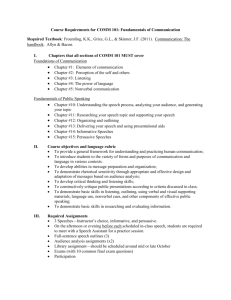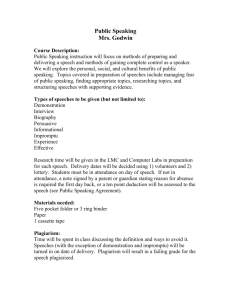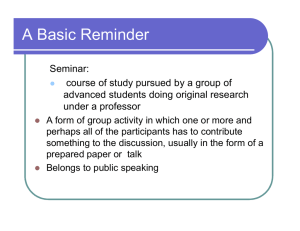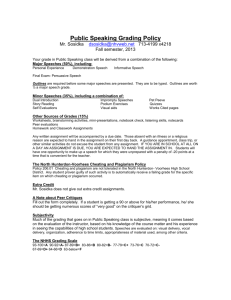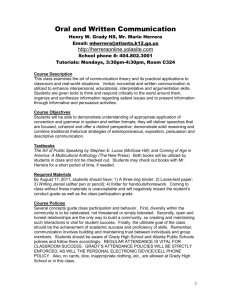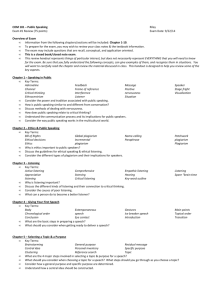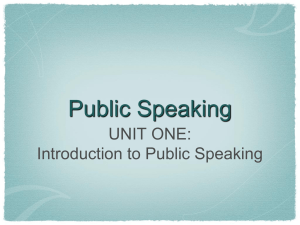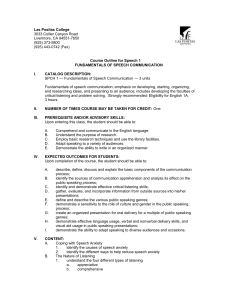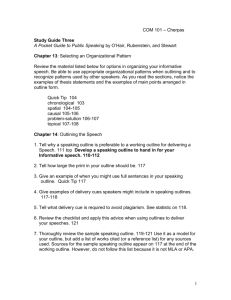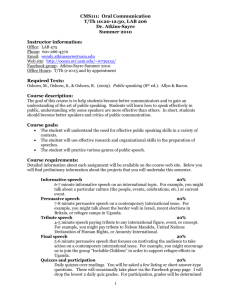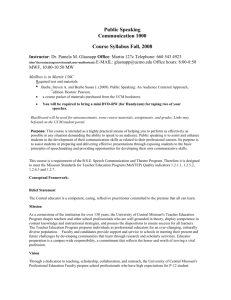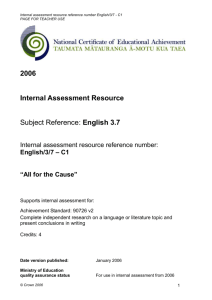Midterm Study Guide - www.micheleweber.homestead.com
advertisement
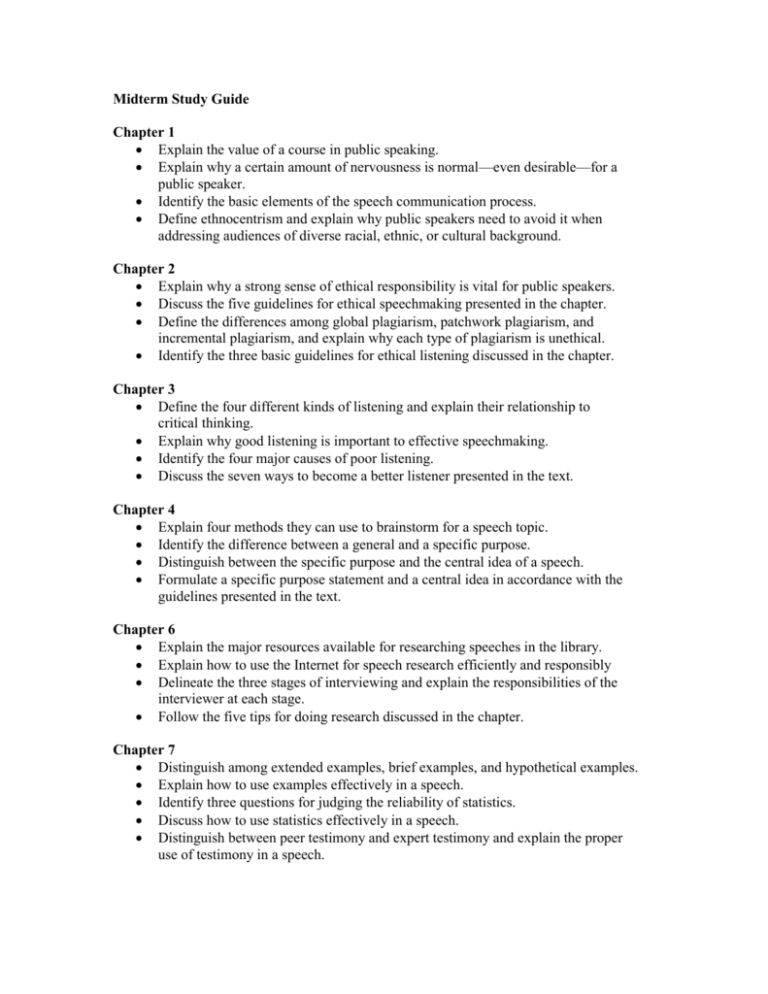
Midterm Study Guide Chapter 1 Explain the value of a course in public speaking. Explain why a certain amount of nervousness is normal—even desirable—for a public speaker. Identify the basic elements of the speech communication process. Define ethnocentrism and explain why public speakers need to avoid it when addressing audiences of diverse racial, ethnic, or cultural background. Chapter 2 Explain why a strong sense of ethical responsibility is vital for public speakers. Discuss the five guidelines for ethical speechmaking presented in the chapter. Define the differences among global plagiarism, patchwork plagiarism, and incremental plagiarism, and explain why each type of plagiarism is unethical. Identify the three basic guidelines for ethical listening discussed in the chapter. Chapter 3 Define the four different kinds of listening and explain their relationship to critical thinking. Explain why good listening is important to effective speechmaking. Identify the four major causes of poor listening. Discuss the seven ways to become a better listener presented in the text. Chapter 4 Explain four methods they can use to brainstorm for a speech topic. Identify the difference between a general and a specific purpose. Distinguish between the specific purpose and the central idea of a speech. Formulate a specific purpose statement and a central idea in accordance with the guidelines presented in the text. Chapter 6 Explain the major resources available for researching speeches in the library. Explain how to use the Internet for speech research efficiently and responsibly Delineate the three stages of interviewing and explain the responsibilities of the interviewer at each stage. Follow the five tips for doing research discussed in the chapter. Chapter 7 Distinguish among extended examples, brief examples, and hypothetical examples. Explain how to use examples effectively in a speech. Identify three questions for judging the reliability of statistics. Discuss how to use statistics effectively in a speech. Distinguish between peer testimony and expert testimony and explain the proper use of testimony in a speech. Chapter 8 Explain why it is important to organize speeches clearly and coherently. Identify the five major patterns of organizing main points in a speech. Discuss the guidelines given in the text for organizing main points. Explain the four kinds of speech connectives and their roles in a speech. Chapter 9 Identify the four objectives of a speech introduction. Explain seven methods that can be used to gain attention in an introduction. Identify the major functions of a speech conclusion. Explain the methods a speaker can use to fulfill the functions of a conclusion. Chapter 10 Explain why it is important to outline speeches. Explain the differences between a preparation outline and a speaking outline. Chapter 13 Explain the major advantages of using visual aids in a speech. Identify the kinds of visual aids available for use in speeches. Apply the guidelines given in the chapter for preparing and presenting visual aids Chapter 14 Explain the four kinds of informative speeches discussed in the chapter. Apply the five guidelines for informative speaking offered in the chapter
